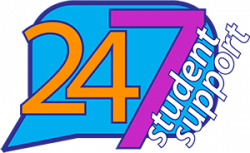As I’ve noted before, I do A LOT of reading in the grants office.
Today, I wanted to call attention to a few enlightening reports that I spelunked while working on our latest grant proposal, a three-year plan for the Claude Moore Health Professions Academy, which has launched in Roanoke city and Roanoke County high schools this fall. The objective is to build nursing and EMS pathways stretching from the high schools through Virginia Western’s programs and beyond.
Understanding our region’s healthcare needs is critical — both for our economy and Virginia Western’s role in that economy. Here are three resources that are rattling around in my brain:
1.
You probably know that Carilion Clinic is the largest employer in the Roanoke Valley.
But did you know the healthcare sector leads all other sectors with the most job growth in the next five years?: 11% by 2021. That 11% growth number comes from the 2017 Virginia’s Blue Ridge Works Local Workforce Plan, which is still in draft stage. The same report notes a 10% growth rate for jobs in the emerging Life Sciences sector (biosciences, biopharmaceutical, bio-related manufacturing), which was touted in a recent GO Virginia report (more on that in the future).
By the way, this workforce region includes the counties of Roanoke, Franklin, Craig, Botetourt and Alleghany, plus the cities of Roanoke and Salem.
Below are some key tables from this draft report, including wage data:
Existing and Emerging Target Industry Sectors
| Industry Cluster | Total Jobs (2016) | Projected Jobs Change (2016-2021) | Projected Job Growth (2016-2021) | Location Quotient (2016) | Competitive Effect (2016-2021) |
|---|---|---|---|---|---|
| Existing Target Industries | |||||
| Healthcare | 21,364 | 2,280 | 11% | 1.17 | 58 |
| Manufacturing | 17,960 | (720) | (4%) | 1.28 | (296) |
| Construction | 11,933 | 343 | 3% | 1.10 | (193) |
| Transportation and Warehousing | 7,261 | 296 | 4% | 1.23 | (174) |
| Financial Services | 717 | 720 | 0% | 0.47 | (13) |
| Emerging Target Industries | |||||
| Food and Beverage Manuf. | 1,214 | 37 | 3% | 2.07 | 35 |
| Life Sciences | 17,968 | 1,875 | 10% | 1.17 | 187 |
In-Demand Healthcare Occupations, by Average Annual Job Openings
| In-demand Healthcare Occupations (4-digit SOC codes) | Total Jobs (2016) | Projected Job Growth (2016-2022) | Avg Annual Job Openings (2016-2022) | Avg Hourly Earnings |
|---|---|---|---|---|
| Registered Nurses Credentials: Associate’s Degree, RN License | 4,292 | 8% | 180 | $29.25 |
| Nursing, Psychiatric, and Home Health Aides Credentials: OJT, 120-hour Certificate, CNA Accreditation | 3,548 | 9% | 153 | $12.12 |
| Personal Care Aides Credentials: Short-term OJT | 1,736 | 19% | 82 | $11.07 |
| Licensed Practical and Licensed Vocational Nurses Credentials: 1-2 year Certificate, NCLEX-PN Accreditation | 1,395 | 4% | 56 | $19.31 |
| Physicians and Surgeons Credentials: Medical School, Specialization, MD | 1,517 | 3% | 55 | $97.52 |
| Counselors Credentials: Master’s Degree, Apprenticeship | 1,220 | 10% | 55 | $22.90 |
| Social Workers Credentials: Bachelor’s Degree, Master’s for Healthcare | 1,103 | 10% | 52 | $19.75 |
| Therapists Credentials: Bachelor’s Degree +, Apprenticeship | 897 | 13% | 48 | $34.58 |
| Health Practitioner Support Technologists and Technicians Credentials: Certified Pharmacy Technician with OJT, 1-2 Certificates or Associate’s Degrees | 912 | 6% | 24 | $14.76 |
| Clinical Lab Technologists and Technicians Credentials: Associate’s Degree with ASCP Medical Lab Technician Certificate, BA for technologists | 430 | 13% | 23 | $17.52 |
| Medical Assistants Credentials: Some Postsecondary Education, OJT | 519 | 8% | 20 | $14.29 |
2.
I found another excellent resource from the Democracy Collaborative, a research group I was introduced to at last year’s City Works (X)po in Roanoke. (And if you’ve ever been curious about this annual placemaking conference, I highly recommend you GO. I’ll write more about it in a future post). The Democracy Collaborative is all about community wealth building (keeping our dollars *local*), and its Hospitals Aligned for Healthy Communities project offers toolkits to help health systems build community wealth through inclusive hiring, purchasing and investment. I share this project with anyone who will listen, especially if they are helping to shape healthcare in the Roanoke Valley. After reading the innovative case studies in the Workforce toolkit (chock full of grant ideas and collaborative strategies), I learned about another resource that I quickly Googled …
3.
The Roanoke Valley Community Health Needs Assessment (CHNA), which Carilion conducts every three years as a requirement of the Affordable Care Act. The result of the health needs assessment is a shorter Health Improvement Implementation Strategy. In this strategic report, Carilion Clinic listed the top priorities for the Roanoke Valley for 2016-18:
- Poor eating habits/ lack of nutrient dense foods in diet
- Access to mental health counseling/substance abuse
- Access to adult dental care
- Access to dental care for children
- Lack of exercise/physical activity
In the same report, Carilion also prioritized improving the community health needs of *Southeast Roanoke.* Find the reports here.
Understanding our community’s health — and Carilion’s strategic priorities — are so important as Virginia Western continues to serve the educational and workforce needs of our region.
What else should we be reading? Email Stephanie Ogilvie Seagle at sseagle@virginiawestern.edu.






 Shelley Lyons is glad to be back on campus as she is a Virginia Western alum, and has served as the Administrative Officer for Grants Administration at Virginia Western since early 2022. Prior to VWCC, her career focus was within the Human Services and Arts fields. She wrote her first grant in 1996 on a whim and has continued to plan and learn since that time. She most enjoys seeing a well-planned project come to fruition, where funder, project manager and beneficiaries can all feel success and see impact.
Shelley Lyons is glad to be back on campus as she is a Virginia Western alum, and has served as the Administrative Officer for Grants Administration at Virginia Western since early 2022. Prior to VWCC, her career focus was within the Human Services and Arts fields. She wrote her first grant in 1996 on a whim and has continued to plan and learn since that time. She most enjoys seeing a well-planned project come to fruition, where funder, project manager and beneficiaries can all feel success and see impact.